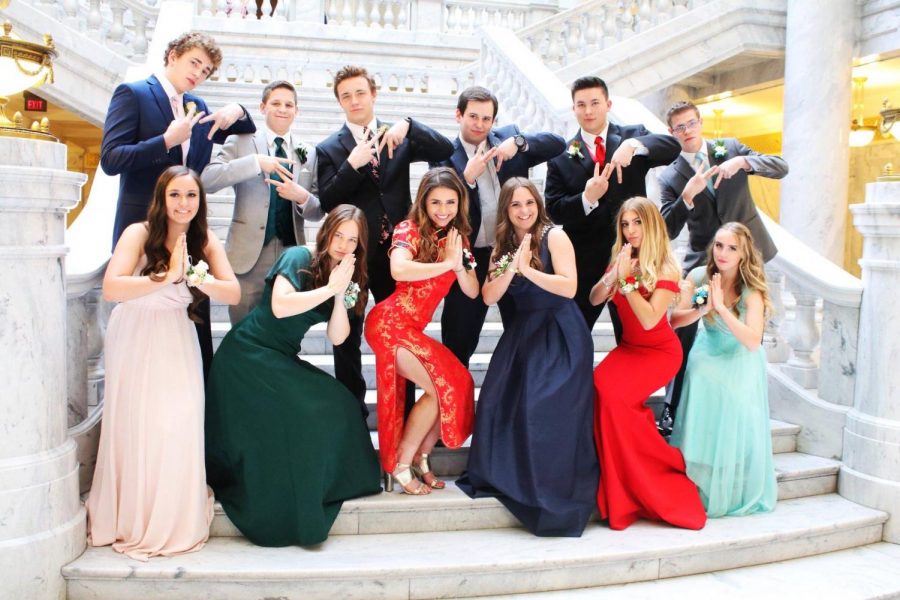Appreciation or appropriation?
It is a form of honor and respect for other cultures and traditions
It all started with a red dress. When Keziah Daum, a senior from Utah, posted a picture of herself and her friends posing in their fancy attire captioned “PROM” she didn’t expect much of it.
What she received was a strong backlash from Twitter users.
Many attacked her for being disrespectful and inconsiderate as she was wearing a traditional Chinese dress known as a cheongsam or qipao, but her intent was not malicious.
It’s surprising that this is an issue in the cultural melting pot that is the United States.
Imitation is the sincerest form of flattery. The idea that borrowing aspects of other cultures is racist is crazy.
It can be argued that promoting elements of other cultures has a positive effect and is more of an appreciation of the culture.
The only issue that can arise is if it is done in a way that is offensive. A genuine and authentic interest in a culture is not harmful in any way.
The exchange of culture is great for many industries like fashion, art, and design. It promotes cooperation and respect between cultures.
For example, in the case of the high schooler from Utah, she believed it was just simply a picture of her in her dress.
“I thought it was absolutely beautiful,” Daum said in an interview with the Washington Post. “(It) really gave me a sense of appreciation and admiration for other cultures and their beauty.”
When enacted in a respectful way like such, there are no problems. In fact, she received support from many Chinese people on Twitter as well. One user said, “I am a Chinese woman. I support you. You rocked that dress!!”
People who get offended over small issues like this need to take a deep breath and realize what is more important. A society where we can all coexist is not one where everyone gets offended over every single form of expression.
The idea that every single aspect of one’s culture needs to be safeguarded is ridiculous.
When it is done in a respectful or innocuous manner, there is no need for phony outrage.
If we truly want to progress as a society, the best way to do this is through the appreciation of all cultures.
Borrowing from other cultures is disrespectful and demeaning
Every culture has things that it holds special to itself. To take these ideals and represent them in materialistic ways is insulting to the achievements of the particular culture.
It loses the intended original meaning. No matter how you spin it, taking sacred aspects from other cultures desecrates it and corrupts the original intention.
Whether intended or not, it is impossible for a majority culture to borrow from minority cultures in a casual setting without succumbing to the original sense of dominance.
Jeremy Lam, who was responsible for the tweet that caused Keziah Daum’s tweet to go viral, put it best.
“I’m proud of my culture, including the extreme barriers marginalized people within that culture have had to overcome those obstacles,” Lam said in a later tweet. “For it to simply be subject to American consumerism and cater to a white audience, is parallel to colonial ideology.”
The origins of the qipao are from the 1920’s in Shanghai. It directly ties in with the women’s liberation movement in China, where Chinese women began to ditch the traditional, loose style of clothing for a more fitting and revealing style, like the qipao.
Many young Chinese women began to adopt the clothing as a political statement.
To wear the clothing just for fun with your friends takes away from the original cultural significance. It adds to the existing majority vs. minority unequal power relations.
There’s a lot of history and cultural significance behind clothing, and it can’t be boiled down to something so simple.
That’s not to say it’s impossible to be respectful. In the appropriate context, borrowing of culture can be acceptable.
Engaging with culture on more than an aesthetic level is one way to solve this. The idea of appreciating different cultures goes beyond only having an opinion on it.
Being involved with it and conversing with people from that culture is a good way to learn.
For example, Daum’s dress may have been more appropriate if she was wearing it to a formal Chinese affair, rather than just a school dance.
The solution to cultural appropriation is simple, just consider the appropriateness of the situation.

Senior Luke Elkins is in his 3rd year in the A-Blast. He has previously been a staff writer and sports editor. He plays varsity soccer and plays...

Senior Elias Moura is one of the editorials editors for the A-blast. This is his 2nd year on staff and enjoys watching everyone argue and loves the environment...












